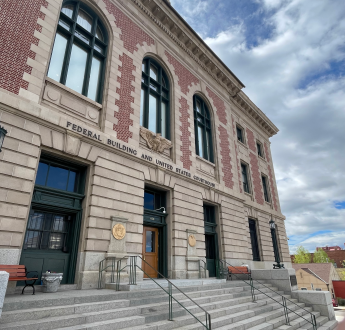GSA Administrator announces major funding for Mansfield Federal Building
GSA Administrator Robin Carnahan made her first official visit to Butte, Montana on June 4 to announce new federal funding for the 120 year-old Mike Mansfield Federal Building and U.S. Courthouse.
Approximately $24 million in funding from the Inflation Reduction Act will be used to support major improvements including using low-embodied carbon (LEC) materials, such as concrete, glass and steel, as well as funding other emerging and sustainable technologies. These include high-efficient mechanical systems that aim to reduce energy consumption and eliminate operational greenhouse gas emissions and enable the facility to run on all-electric power.
“Through the Inflation Reduction Act, we’re transforming federal facilities like the Mansfield Courthouse into models of clean energy innovation and catalysts for the domestic manufacturing industries of the future, all while reducing harmful pollution and saving taxpayer money,” said Carnahan.
Originally built as a post office and U.S. Courthouse in 1904, the Mansfield Federal Building is part of the Butte-Anaconda National Historic Landmark District, the largest in the U.S. Preserving the building’s historic aspect while modernizing it is a major focus for the project.

“It’s an old building. Every old building needs to be improved over the years, and so we’re pleased that we can continue to get sustained funding to make these improvements that over time are going to make this a building that’s going to make this a core feature of this community for a long time to come,” said Carnahan.
The major improvements include completing a seismic upgrade of the building to bring it in line with the current Standards of Seismic Safety for Existing Federally Owned Buildings using the LEC materials. This will help reduce carbon emissions and enhance the resilience of the building to mitigate risks from events such as storms, wildfires, and even earthquakes.
Other repairs will address accessibility and air circulation, remedy code deficiencies, replace the building’s roof, and make upgrades to other building systems.
“GSA is committed to supporting the use of building materials that help address climate change with products made right here in America,” said Denise Maes, Regional Administrator for GSA Regions 5, 6 and 8, in a recent press release. “Upgrading this facility is also prudent to help reduce our energy costs and save taxpayer dollars.”
Construction is anticipated to begin in late 2025, with substantial completion by the summer of 2027.

 U.S. General Services Administration
U.S. General Services Administration